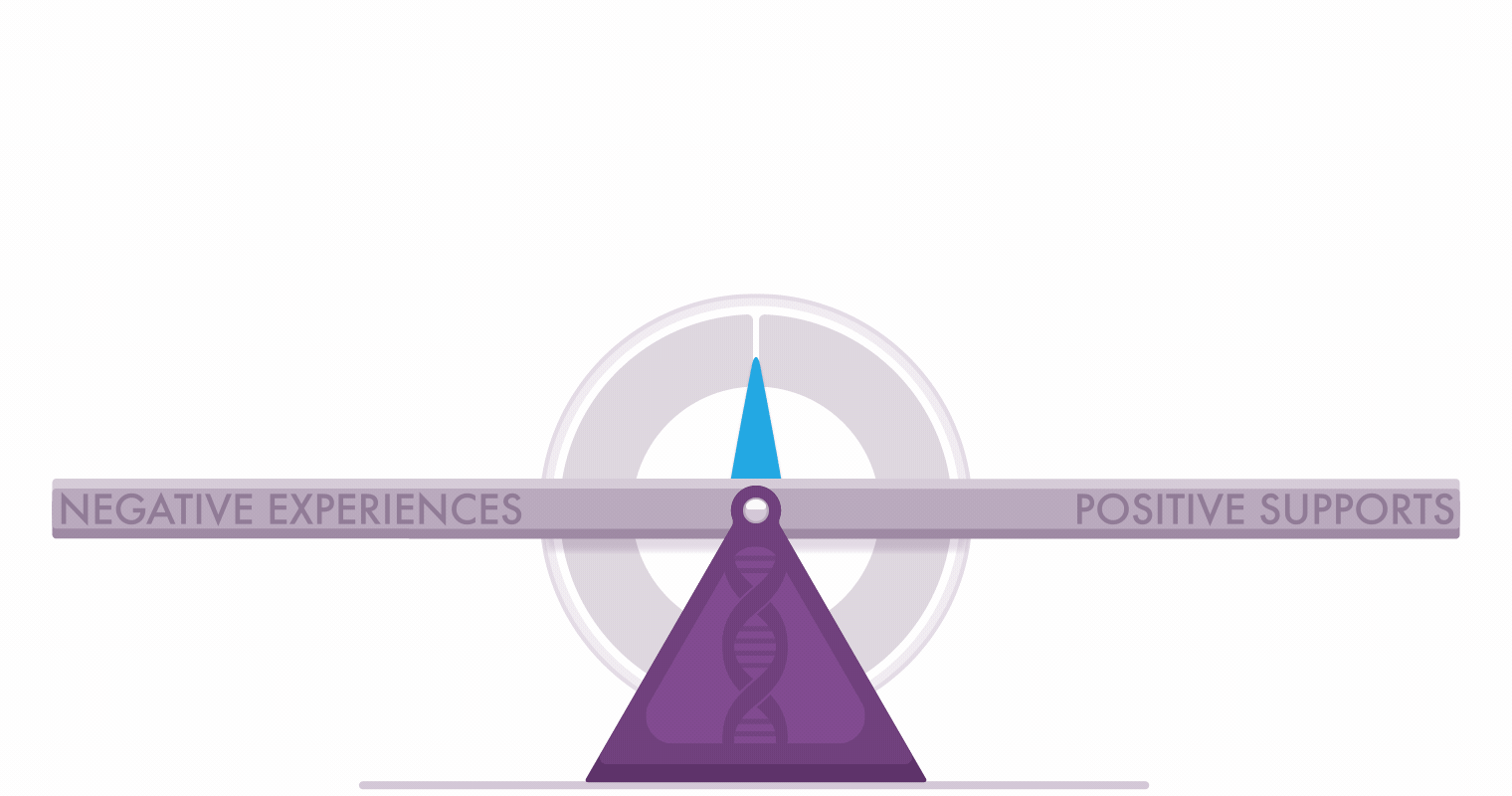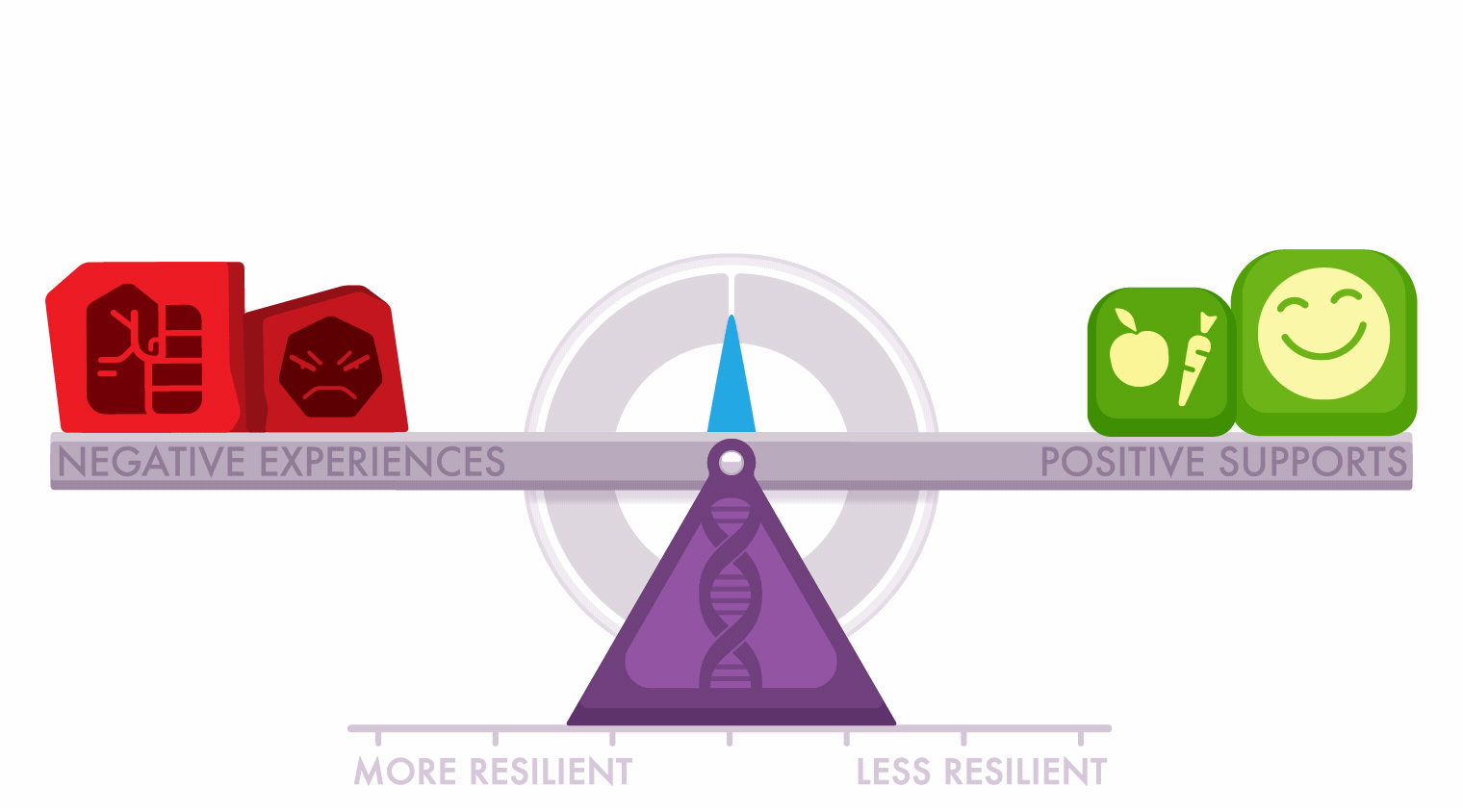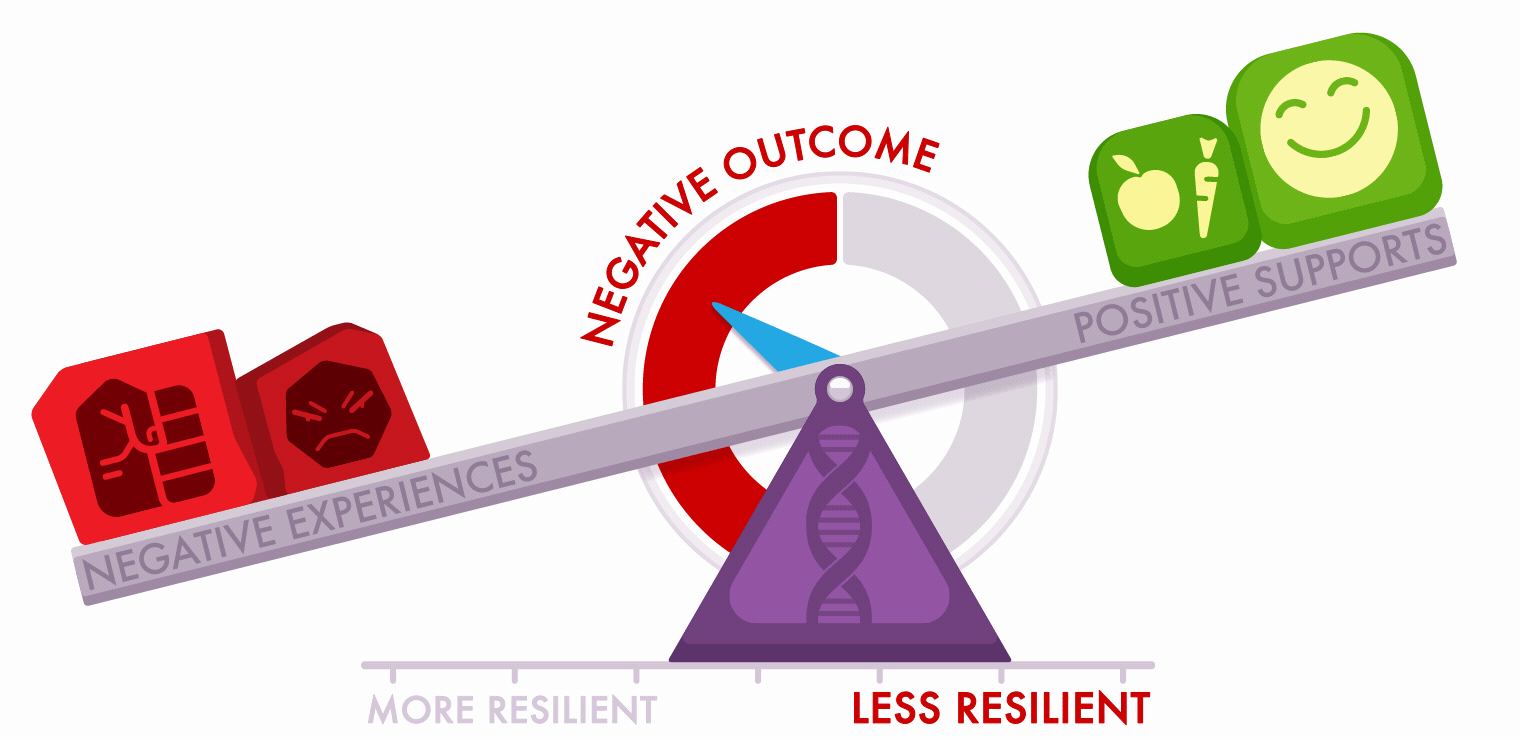TIPPING THE BALANCE TOWARD GOOD HEALTH
To promote a good standard of health and help prevent mental health and addiction problems in our communities, we need to support all individuals in building the foundations of resilience—the skills and abilities that develop through experience and allow us to adapt and stay healthy even in circumstances of severe stress or hardship.
The resilience scale is a metaphor to explain why some people seem more resilient than others and to help visualize how to improve resilience: the ability to respond positively in the face of adversity.
LOADING THE SCALE
Think of a scale where a person’s good and bad experiences get stacked over the course of development. The positive experiences that get stacked on one end are called protective factors and include things like attentive caregivers and available social supports that provide things like good prenatal health, nutrition, health care, and a childhood rich in Serve and Return interactions. The other end of the scale gets loaded up with bad experiences—what scientists call risk factors. These are experiences that cause Toxic Stress and tip the scale in a negative direction. Toxic stress occurs when no caring adults are present to buffer the effects of experiences such as abuse, neglect, or parental addiction.

A person’s resilience scale is a good predictor of health outcomes, and what gets placed on the scale in early childhood is especially important. When the scale, weighed down by positive experiences, tips in a positive direction, a person is more likely to experience good health, academic success, strong relationships, and economic security. A person with a scale weighed down by experiences that cause toxic stress will have increased risk for stress-related diseases, including diabetes, heart disease, anxiety, depression, and addiction. Many of these outcomes surface in adolescence or adulthood, long after the resilience scale was loaded by experiences in early childhood.
SETTING THE FULCRUM
Most of us know of people who seem to thrive in spite of difficult childhoods, or those who struggle in life even though good caregivers and strong communities loaded their scales with predominantly positive experiences.
Experiences alone are only half of the story; genes also play a role. A person’s genetic inheritance is like the starting position of the fulcrum, or the balance point, of the scale: some of us are born highly sensitive to the effects of toxic stress, while others can withstand significant amounts of stress without experiencing lasting harm to brain architecture. On the scale, we see that the position of the fulcrum affects how much leverage positive or negative experiences have in shaping our life outcomes.

HOW DO WE BUILD RESILIENCE?
Research into epigenetics has revealed that, remarkably, the position of the fulcrum is not set in stone. Experiences at critical stages of development modify how our genes are expressed. Over time, supportive relationships and serve-and-return experiences can shift the fulcrum in a more resilient direction, strengthening brain architecture so that a person is better prepared to bounce back from significant life stresses.

Because life events aren’t always in our control, it’s important to help all children build the foundations of resilience so that they can better meet the challenges they may face during development and later in life. For older children, adolescents, and adults, it is never too late to build resilience; though the required effort increases with age, we can always improve skills that enable better outcomes.
The Science of Resilience
Research shows that people who experience adversity early in life are more likely to experience poor outcomes in learning, relationships, and physical and mental health, including addiction—but this isn't true for everyone who experiences early adversity. These latter individuals are said to be resilient, since they have a positive outcome in the face of negative circumstances.
Where Does Resilience Come From?
We can help children build the foundations of resilience by supporting nurturing caregiver relationships and by providing the supports that all families need but only some receive. The foundations of resilience are the skills and abilities that allow children to cope with significant challenges. These skills—like emotional regulation, coping with stress, being able to plan and problem-solve—can be fostered through serve-and-return interactions with supportive caregivers. These interactions help children strengthen key brain circuits as they are forming and can affect gene expression in a way that is beneficial to the child over the lifespan.
We all have a role to play in helping build resilience in children: while parents and extended family are a key source of this support, other adults can also act as supportive caregivers to a child. A responsive childcare worker, teacher, or coach can make a world of difference in buffering a child from the toxic effects of ongoing stress. Interventions designed to support parents in their role by treating an addiction or mental health problem, or a domestic violence issue, are effective in building resilience in children.
